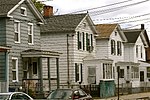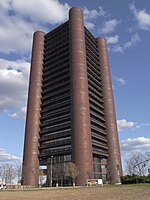Yale School of Nursing
Yale School of Nursing (YSN) is the nursing school of Yale University, located in West Haven, Connecticut. It is among the top 20 graduate schools in the country, according to the latest rankings by U.S. News & World Report (2017). In addition to the top 20 tier overall ranking, the school’s midwifery specialty had the second-highest score nationally as ranked by peer institutions. Yale School of Nursing’s psychiatric-mental health specialty ranked sixth, and its pediatric nurse practitioner specialty came in at fifth in a three-way tie. Yale’s School of Nursing remains among the most selective in the nation, with only 29% of applicants accepted. Established in 1923 in New Haven, Connecticut, YSN moved in 2013 to Yale University's West Campus, located in West Haven and Orange, CT.
Excerpt from the Wikipedia article Yale School of Nursing (License: CC BY-SA 3.0, Authors).Yale School of Nursing
Church Street South, New Haven
Geographical coordinates (GPS) Address Phone number Website Nearby Places Show on map
Geographical coordinates (GPS)
| Latitude | Longitude |
|---|---|
| N 41.2995 ° | E -72.9303 ° |
Address
Yale School of Medicine Business Center
Church Street South 100
06519 New Haven
Connecticut, United States
Open on Google Maps






